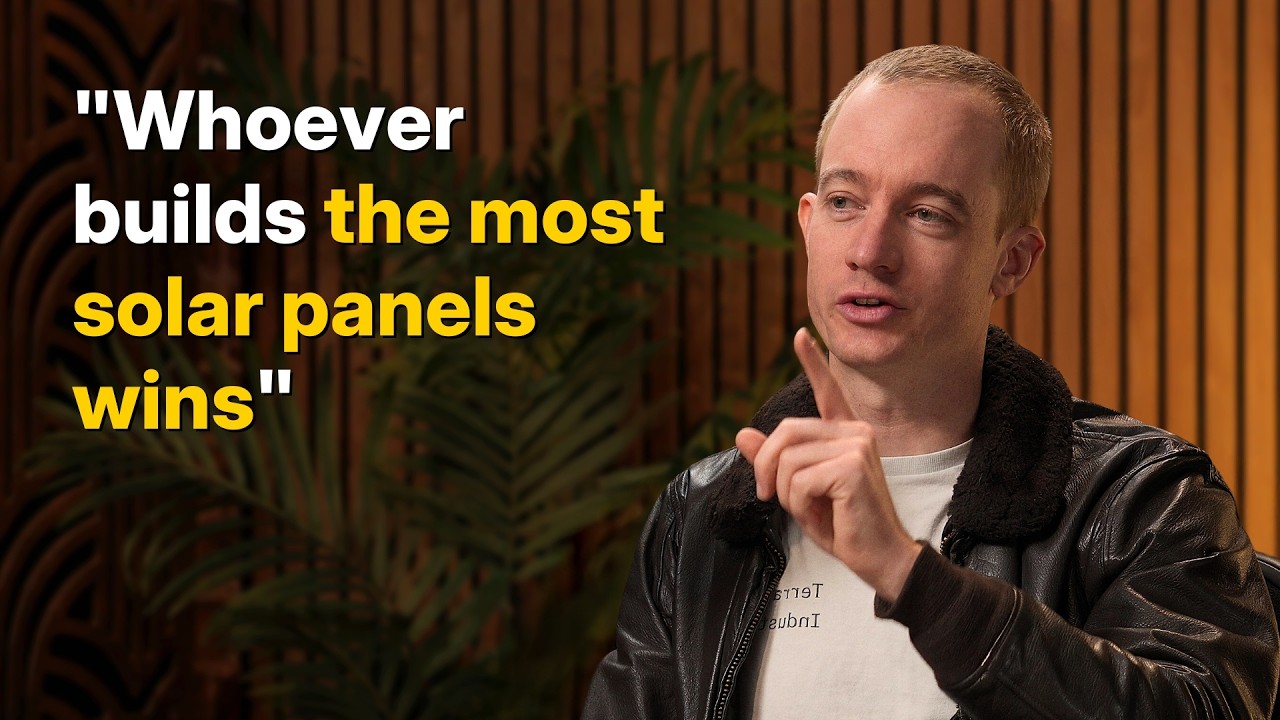In the conversation, Casey Handmer discusses China’s current dominance in solar energy production and battery manufacturing, highlighting the challenges and opportunities for the U.S. to scale renewable energy infrastructure to meet the growing electricity demands of AI development. He envisions a future where AI and energy converge through vast solar-powered silicon computation systems, while promoting his company’s mission to create synthetic fuels that could revolutionize industrial processes and support a sustainable, AI-driven economy.
In this in-depth conversation with Casey Handmer, founder and CEO of Terraform Industries, the discussion centers on the industrial race underpinning AI development, particularly focusing on energy production and supply chains. Casey highlights China’s dominance in solar panel manufacturing and battery production, contrasting it with the United States’ current industrial capabilities. Despite China’s advantages, including massive solar capacity and synthetic fuel development, Casey argues that the U.S. still holds significant potential due to its geographic advantages, innovation hubs, and the possibility of rapidly scaling solar manufacturing with sufficient political will and investment.
The conversation delves into the technical and economic challenges of powering the massive data centers required for AI, emphasizing the growing demand for electricity driven by AI workloads. Casey explains that while natural gas currently powers a significant portion of data centers, solar energy combined with battery storage is poised to become the dominant source by the 2030s. He stresses that solar panels benefit from steep learning curves and rapid cost reductions, making them increasingly competitive despite regulatory and permitting hurdles in the U.S. The discussion also touches on the inefficiencies and high costs associated with traditional power grids and natural gas turbines, suggesting a future where data centers might operate off-grid with dedicated solar and battery installations.
A significant portion of the dialogue explores the scale and logistics of deploying solar infrastructure to meet AI’s energy demands. Casey provides concrete examples, such as the land area required for solar farms powering megawatt-scale data centers, and compares these needs to historical large-scale industrial projects. He also discusses the regulatory challenges, particularly environmental impact assessments that slow solar deployment in the U.S., contrasting this with more favorable conditions in places like Texas. The conversation underscores the importance of overcoming these barriers to enable a solar-powered AI future.
Looking further ahead, Casey envisions a transformative future where AI and energy production converge at a fundamental level. He speculates about a post-human civilization powered by vast arrays of solar panels and silicon-based computation, potentially extending into space with integrated solar-computing wafers acting as autonomous entities. This vision ties into broader themes about the evolution of complexity and energy use in civilization, suggesting that the ultimate form of intelligence might be silicon-based systems powered directly by stellar energy, representing a new thermodynamic and cognitive paradigm.
Finally, Casey shares insights about Terraform Industries’ mission to produce synthetic natural gas and other primary materials using sunlight and air, aiming to decarbonize and revolutionize industrial processes. He invites talented engineers and scientists to join his team, emphasizing the company’s innovative culture and the opportunity to work on cutting-edge technology with significant impact. The conversation closes with reflections on the broader implications of AI-driven economic transformation, energy demand, and the potential for a new industrial revolution powered by renewable energy and advanced computation.
